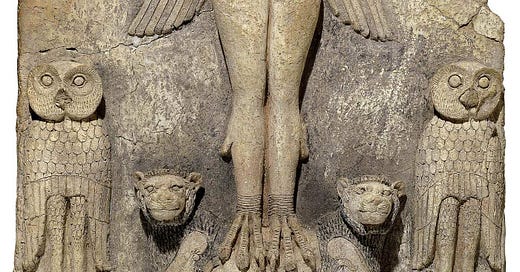“Things do not start well,” opens Bettany Hughes: “Venus—or Aphrodite as she was originally called by the Greeks—was a primordial creature, said to have been born out of an endless black night before the beginning of the world.”1 If you know your Theogony, you know what she means: in one of her two births, Aphrodite is born from the castration of Ouranos by Kronos at the behest of their mutual mother, and Ouranos’s consort, Gaia, the Earth; when the offending member falls into the sea, Aphrodite is born from the foam, and makes a tour of Kythera and Cypriot Paphos. This, of course, is Ouranian Aphrodite, the “heavenly” or “celestial” one; there’s another Aphrodite, too, this one born from the union of Zeus and Dione in the Olympian generation. Continuous between these alternative mythographies is the sea: Aphrodite, born “from the sea foam” by a popular (but wrong) etymology attributed to Hesiod, associated with seashells and sparrows, and brought across the sea to Greece, through Cyprus. Her association with the island—famous in antiquity for its production of copper, so named for it, one of the two elements necessary to the production of bronze for which we name a two-thousand year period in Near Eastern and Mediterranean history, the other being tin from Bactria—endured in Greek consciousness: it was seen as special to her, the place for one of her most important earthly palaces away from Olympos; Kypris, the Lady of Cyprus, remained one of her cult names; and copper was her special metal. (Tin was Jove’s.)
Keep reading with a 7-day free trial
Subscribe to A Perennial Digression to keep reading this post and get 7 days of free access to the full post archives.




